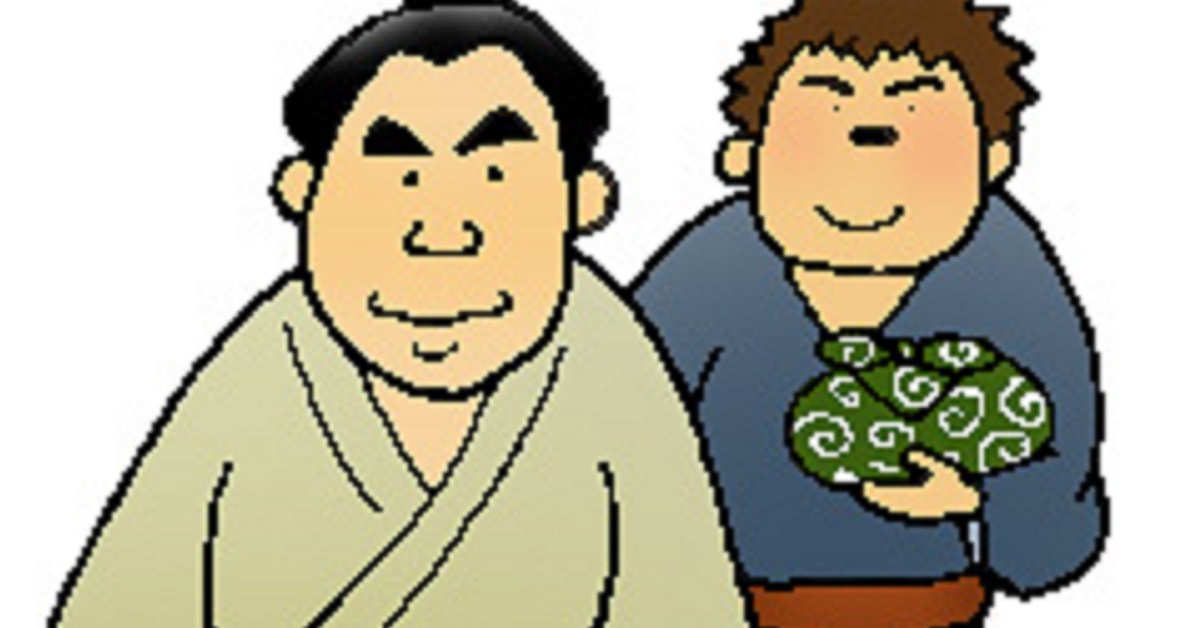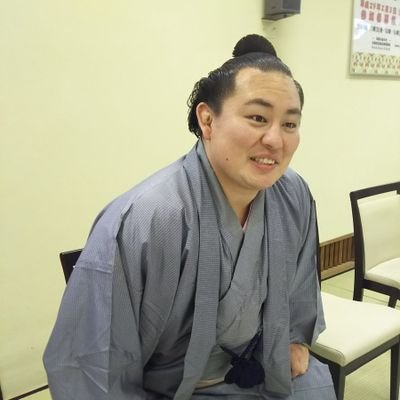In every sumo stable, there is one wrestler who stands at the very top — the Heyagashira, the highest-ranked active wrestler in the group.
He is not only powerful but also the moral and social leader who maintains order and tradition within the stable.
This article explains what a Heyagashira is, their responsibilities, and their vital role in Japan’s traditional sumo culture, in a way that even newcomers to sumo can easily understand.
What Is a Heyagashira?
A Heyagashira is the highest-ranked active wrestler within a sumo stable.
The sumo world is based on a strict ranking system called Banzuke, where wrestlers move up or down depending on their tournament results.
The wrestler who holds the highest position in the stable naturally becomes its leader — the Heyagashira.
Every stable contains a wide range of wrestlers, from beginners to grand champions.
The Heyagashira serves as the central figure of the stable, interpreting the master’s intentions and maintaining order in daily life and training.
They are respected not only for their strength but also for their leadership, discipline, and sense of responsibility.
Sumo Ranking Structure
| Rank | Description |
|---|---|
| Yokozuna | The highest rank in sumo, representing strength, dignity, and tradition. |
| Ozeki | The second-highest rank; wrestlers here must show consistent success and composure. |
| Sekiwake / Komusubi | Known collectively as “Sanyaku,” these positions require both skill and stable results. |
| Maegashira | Mid-level wrestlers in the top division, often appearing in televised bouts. |
| Juryo | The first salaried division; wrestlers here are called “Sekitori.” |
| Makushita and below | Lower divisions; wrestlers at these levels train daily to one day become Sekitori or Heyagashira. |
The Role of a Heyagashira
A Heyagashira is not only the strongest wrestler but also the moral and behavioral model for everyone in the stable.
They keep order in training, monitor younger wrestlers’ behavior, and ensure that the traditions of sumo are respected.
They also serve as a bridge between the master (Oyakata) and the other wrestlers.
During interviews, ceremonies, and public appearances, the Heyagashira may represent the stable and speak on behalf of its members.
Because of this, their words and demeanor carry great influence both inside and outside the stable.
Main Duties of a Heyagashira
| Category | Responsibility |
|---|---|
| Instruction | Coaching and advising junior wrestlers in technique and attitude. |
| Example | Serving as a role model in manners, speech, and daily behavior. |
| Representation | Speaking for the stable in media, events, and public ceremonies. |
| Leadership | Maintaining order and morale in the stable’s communal life. |
The Heyagashira’s behavior — how they speak, act, and encourage — directly shapes the spirit and reputation of their stable.
In essence, they are the “captain” of the stable.
The Path to Becoming a Heyagashira
To become a Heyagashira, a wrestler must first achieve a high rank through consistent success in tournaments.
However, rank alone is not enough — they must also earn trust, respect, and personal integrity.
In sumo, discipline, humility, and dedication are valued just as highly as physical strength.
From the early days of training, wrestlers are observed not just for performance, but for how they treat others and handle adversity.
Over time, the one who demonstrates reliability, composure, and genuine leadership naturally becomes the Heyagashira.
Qualities Required of a Heyagashira
| Trait | Explanation |
|---|---|
| Skill | Demonstrated competitive results and technical strength. |
| Respect | Admired and trusted by peers, juniors, and the master. |
| Discipline | Maintains manners, punctuality, and emotional control. |
| Adaptability | Capable of leading a diverse group, including foreign wrestlers. |
The Heyagashira must embody these qualities simultaneously — strength of body, and strength of character.
Foreign Wrestlers and the Heyagashira
Modern sumo includes wrestlers from all over the world — Mongolia, Georgia, the U.S., and Egypt, among others.
For these athletes, the Heyagashira acts as a mentor and cultural guide.
They are often the first to teach foreign wrestlers the nuances of Japanese etiquette, sumo rituals, and daily discipline.
For instance, the Heyagashira demonstrates how to bow, how to enter the ring (Dohyo), and how to show respect to the Shinto deities enshrined in the training hall.
Much of this instruction happens nonverbally — through example rather than words.
When misunderstandings occur due to cultural or language barriers, the Heyagashira often mediates between the master and the foreign wrestlers.
In this way, they serve as a bridge between traditions and people.
Examples of Heyagashira’s Guidance for Foreign Wrestlers
| Situation | Heyagashira’s Role |
|---|---|
| Language barrier | Communicates patiently and teaches through demonstration. |
| Cultural confusion | Explains the meaning behind rituals and customs. |
| Homesickness | Provides emotional support and companionship after training. |
| Cultural differences | Adjusts the environment to promote understanding among all wrestlers. |
Through such actions, the Heyagashira becomes a symbol of unity and trust beyond national borders.
The Difference Between Heyagashira and Oyakata (Stablemaster)
The Oyakata is a retired wrestler who manages and runs the stable.
They handle business matters, education, and overall guidance.
In contrast, the Heyagashira is the top active wrestler — the one who leads on the ground during daily training and life.
| Comparison | Oyakata (Master) | Heyagashira |
|---|---|---|
| Position | Manager and educator of the entire stable | Leader among active wrestlers |
| Main Role | Administration, guidance, decision-making | Practical leadership, enforcing discipline |
| Age Range | Usually 40–60, retired wrestlers | 20s–30s, active competitors |
| Scope of Responsibility | All wrestlers and staff | Mainly junior wrestlers and team morale |
| Style of Teaching | Theoretical and advisory | Hands-on and example-driven |
A good relationship between the Oyakata and the Heyagashira ensures the stable runs smoothly.
Even when the master is away, the Heyagashira maintains order and discipline.
Influence and Leadership Power of a Heyagashira
The Heyagashira has enormous influence over the morale and atmosphere of the stable.
A few words of encouragement can lift the spirit of the entire group; a moment of silence can convey discipline more effectively than shouting.
Their attitude sets the rhythm of both training and communal life.
When the Heyagashira is cheerful and motivated, the stable thrives.
When they are moody or indifferent, the entire environment can suffer.
Thus, this role requires emotional intelligence and consistency.
How Different Types of Heyagashira Affect Their Stable
| Type | Atmosphere in the Stable | Result |
|---|---|---|
| Positive and kind | Friendly, supportive training environment | Fast development among juniors |
| Strict and responsible | Disciplined and focused | Consistent results, mutual respect |
| Moody or unpredictable | Unstable, tense atmosphere | Lower morale and slower progress |
| Indifferent or passive | Lack of unity and motivation | Decline in performance and order |
In short, a Heyagashira must balance authority with empathy, ensuring that discipline and encouragement coexist.
Cultural Significance of the Heyagashira in Sumo
Sumo is not merely a sport — it is a living Shinto ritual that embodies Japanese values of respect, gratitude, and perseverance.
The Heyagashira represents this spirit more than anyone else within the stable.
Through their demeanor and leadership, they teach others that true strength lies not just in winning matches, but in upholding dignity and humility.
During regional tours or public events, the Heyagashira often interacts with local communities and children.
Their conduct in such moments directly reflects on the image of the entire sumo world.
In this way, the Heyagashira serves as an ambassador of Japanese culture, both domestically and abroad.
Conclusion
A Heyagashira is the highest-ranked active wrestler in a sumo stable, responsible for maintaining discipline, setting examples, and supporting the master’s leadership.
They combine physical strength with moral integrity, guiding younger wrestlers through both word and action.
The relationship between the Oyakata and the Heyagashira defines the stability and growth of the stable.
The Heyagashira’s role extends far beyond the ring — they embody the heart of sumo tradition: respect, humility, and perseverance.
They are proof that in sumo, as in life, true leadership is built on character, not just strength.
Next time you watch a sumo tournament, take a moment to think of the Heyagashira — the quiet leader behind the scenes who keeps the ancient spirit of sumo alive.





コメント